













Some murals might be controversial or not to everybody’s liking, but they do create a vibrant piece of art for all to enjoy.



The origin of the word ‘mural’ is Spanish; it was used to refer to something that is attached to a wall. However, it wasn’t until the beginning of the 20th century that the term mural as we know it now became truly known in the world of art.
But what about all the murals throughout history you might ask. Sure, there have been cave paintings like the ones in Borneo that date back to 40,00052,000 BP, and the famous ‘Chauvet Cave’ in southern France (32,000 BP). Likewise, many ancient murals were discovered inside ancient Egyptian tombs (3150 BC), and there is also the Greek and Roman versions.
However, even though the concept of painting on walls has been around for MANY years,
we have only recently started referring to them as murals.
When you think of murals in New Zealand one place that is familiar to a lot of people is Ka tikati in the Bay of Plenty, that captured its roots through the medium of a mural gallery. In the early 1990s, this town man aged to transform itself from a small township that was quickly passed through on the way from Auckland to Tauranga into what is now known as the ‘nation’s home of mural art’.



This small town is not alone in its mural art concept. Taranaki also has many great works of art that have been painted in its towns from Eltham to Patea, to the impressive art on the sides of the buildings in New Plymouth.
Whether they symbolise an historic event or portray a snapshot of cultural regional importance, they have become a part of the urban landscape and brighten up the grey monotonous areas that we live and work in.
Most artists remain unknown to the public, but the art left behind is enjoyed for many generations.
Taranaki artist Luther
award-winning mural is now on display on State Highway 3 in Patea.The mural, titled “Mana Moana”, symbolises the unprecedented number of stranded whales in Taranaki over the past few years; the most recent being the discovery of a decomposing humpback whale just north of the region.

As an artist myself, it is a joy to see the amazing talent that creates these impressive works of art. Murals are also often used as a memoir.
To quote the American journalist and writer Rick Bragg; “the murals have woven themselves in the fabric of the neighbourhoods, and the city”. They become memorials and provide a historical perspective in the communities they represent. <<<





Artistic expressions that capture the spirit of the time.

The fun mixture of pop-cultural elements, from ET and Tigger on the walls of New Plymouth to Marvin the Martian in Eltham, surely evoke smiles to even the most cynical passerby!


Next time you are driving through a South Taranaki town or walking the back streets of New Plymouth, see what you can spot on your journey. I was pleasantly surprised to spot the gnome mural in New Plymouth, based on characters from the Dutch illustrator Rien Poortvliet!





Hāwera High School provides a variety of academic, vocational, cultural and sporting opportunities to their students. They aim to ensure the school is a safe and supportive environment, and one that promotes opportunities to excel in academic pathways with a broad curriculum. Specialist programs are offered to those students with special needs (including gifted and talented), transition programs for students entering the workforce, and comprehensive sports programmes that allow athletes to challenge their limits. Hāwera High School sets high standards for students based on values of Honesty, Achievement, Well-being, Excellence, Respect and Attitude. These values promote self-reflection and behaviour awareness, of being considerate to others and the environment, and being committed to being lifelong learners.

The school is proud of the success of current and past students in a wide range of subjects and activities. Any such success comes from a community of learning. The partnership between the student, home and school is vital if students are to achieve personal bests, develop into well rounded citizens, and leave school with a range of choices and opportunities.
Hāwera High School is fortunate enough to enjoy educating students in well catered learning areas and prestigious sporting facilities. The Hub – Taranaki’s premier sports, recreation, events, and function centre is right on the school’s doorstep and hosts Physical Education, Lunchtime Recreational Activities, team trainings and games at local, interprovincial and national level, as well as whole school assemblies and the senior prom. From 2021, Senior Students have been
able to choose a course from the VLN catalogue of courses if it is not available as a traditional class at Hāwera High School. Admission to a VLN course is dependent on students showing an ability to self-manage their learning.
Hāwera High School is also the proud home of the Endeavour Centre – a custombuilt special needs facility that caters for ORS funded students, students with learning needs and students requiring extra support.
The growth of Hāwera High School reflects much of the story of Hāwera and its surrounding district. Its changes reflect the changes in the social and economic times of the past ninety years. The school has its origins in the primary school established in 1875, its transition into a District High School in 1901, and the demand for a Technical School in the next few years


In 1919 the school opened at the Technical School building in Princes Street and two years later moved to a new site in Camberwell Road. Many pupils arrived by trains from Eltham and Patea. Agriculture seems never to have been a popular course. Until the 1940s, large numbers of pupils left school at standard 6 and went directly into farm or domestic work.
The swimming pool was built in the mid 1950’s and the students were rostered out of class a few at a time to assist with the digging of the hole and the construction work around the site. The building which currently houses the Canteen, Sports Office and Caretaker’s facilities was a large workshop complex with woodwork, apprentice plumbing, motor mechanic and electrical training spaces. The space between the pool and this building was a 25-yard outdoor rifle range for use by students under
supervision during the Military Cadet programmes that ran in all state secondary schools. All male students were taught firearms use and safety unless their parents specifically requested that they be excused on religious grounds or physical disability. If this occurred, students were drafted into the school brass band, pipe band or the medical corp. Consequently, Hāwera Technical High School was well known for the expertise of its musicians.
Hāwera High School is very productive in the Arts, including classes in drama, Maori performing arts, music, and visual arts. Many of the students leave Hāwera High School as very competent musicians and singers having developed their skills under the tutelage of the quality instrumental and vocal teachers. There are also a number of performing opportunities available in competitions and events in and outside of school.
Hāwera High School encourages you to visit and explore the wonderful opportunities provided to the students.
Kia Kaha Te Awhina: Through support and caring/sharing there is strength.






As a nation we are so fortunate to be able to still go out and see concerts, movies, and stage musicals. Even luckier were the people of Hawera, who witnessed some of the amazing talent this town has on offer during the performances of the musical FOOTLOOSE in the first week of July. We went to see the latest performance from Hawera High School at the Memorial Theatre where we kicked off our Sunday shoes and cut FOOTLOOSE.



When the original movie starring Kevin Bacon came out back in 1984, I was still in High School myself. I saw the film at the cinema, loved all the songs, and still own the soundtrack on tape. From a young age I’ve always had a soft spot for musicals, having been in some myself and working behind the scenes on others later in life.

For me, just being part of the amazing energy during the dress rehearsal was a true highlight. As I was taking photos and witnessing their performances in the first half, the talent of both Noahs was already obvious. When we left that day, Noah Hunt (Reverend Moore) stayed behind with the orchestra committed to working on his performance.

Noah’s arc showed a strong development as we watched his character wrestle with inner demons throughout the story and discovered the reason why dancing has been banned in the small town of Bomont.
The original story by Dean Pitchford is (foot) loosely based on an actual event in ELMORE CITY, OKLAHOMA (1979).






Most people from the era would have seen the version featuring Kevin Bacon, or maybe even the 2011 remake. At the very least, you should be familiar with some of the amazing songs from the soundtrack. However, nothing beats an energetic live performance by an incredible cast of emerging local talent, some of whom you would expect to pop up on a New Zealand drama or singing show in the near future.
For me, the absolute highlights in this stellar show of emerging stars were (in no particular order by the way - as it was hard to even make a selection) were

‘Heaven help me’ by Noah Hunt, ‘Can you find it in your heart’ by Brenna Johnson and ‘Holding out for a hero’ by Georgia Maxwell and friends. Noah Fortuin was excellent as the lead, Ren McCormack. His cool character surely must have won the hearts of many of his peers outside the show. With a Dutch sounding surname like ‘Fortuin’ I wonder if there might be some ‘six degrees of Kevin Bacon’ connection to myself, although it more likely will be the South African variety.
First time performer Aaron Booker stood out as the Bomont local, Willard, who befriends Ren after he has switched

from the big city to small town life. His version of ‘Mama says’ was hilarious and was the cause of probably the most laughs from the audience.
Willard’s love interest Rusty was played by the talented Kaylee Mihaljevich. Kaylee has been part of many other shows but this was her first solo singing and speaking role. It was so great to see so many of the cast shine on stage and having the courage to take the step into drama for the first time. Like Krishay Lal, who played local high school drop-out and bad boy, Chuck.


His version of ‘The girl gets around’ with ‘his crew’ was another joy to be seen and heard.
With such a large ensemble cast it is impossible to give enough credit to all performers equally, especially when each and every person put 100% effort into the show. Having dedicated so much of their time to this massive show full of song, dance and drama makes all the cast winners.
Having gone through a range of emotions throughout the show, it was an absolute pleasure to finish off with the incredible ‘mega mix’ of all the hits at the end.
A special mention has to go out to the amazing band that, conducted by Shaun Campbell, performed all the classic 80’s songs. Kudos also to the hard-working backstage crew who made sure the operation of the lights and sound went smoothly.
A word of thanks to the directing team and Alison Wright in particular, whose words I would like to quote here from the beautiful glossy program:
“In these uncertain times when we have become disconnected from the world and each other, the arts bring us together. They inspire, evoke emotions, reveal human nature and transcend boundaries. Art teaches the human heart to know itself.”

It is so important as a community to support these shows and by the reaction of the crowd, these kids (and teachers!) have a bright future ahead of themselves. We can’t wait to see what the next project will be and look forward to spotting the names from the cast in future NZ show credits! <<<



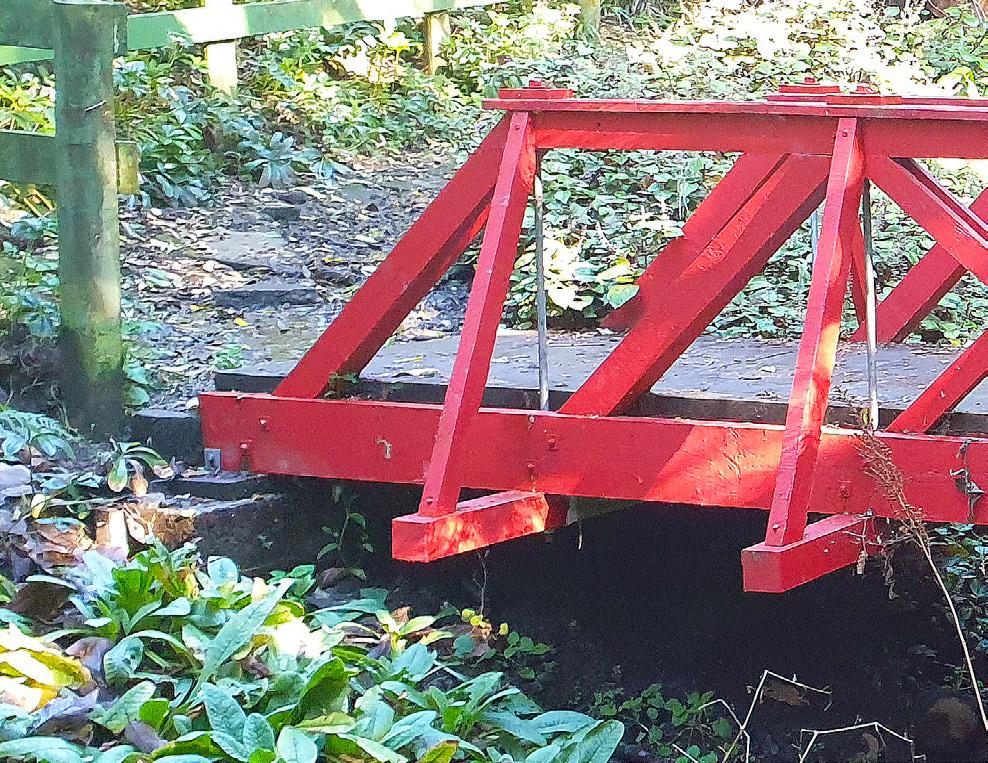









Situated on the corner of High Street and Cameron Street (Hāwera), Goodson Dell is a tranquil, woodland setting offering a picturesque walk among native and exotic trees and plants.
Goodson Dell is a small but beautiful preserve. As soon as you walk down the pathway from the street you feel as if you are in another little world. Seating is provided from which you can view the beautiful natural surroundings, including native trees and a stream. Originally part of the home garden of community leader and farmer Charles Goodson, the Dell was first developed as a swimming pool by damming a small spring. The swimming hole was lined by tidy concrete steps, and a bridge stretched over the spot where many Hāwera children learnt to swim and paddle a boat. The Dell’s trees, many of which are over 100 years old, include a magnificent Swamp Cypress.

Over the years, the garden has been divided and sold. The swimming hole was drained and the garden fell into rack and ruin until four walking friends from the Hāwera Women’s Club – known as ‘the Goodson Guerrillas’ – decided to do something about it. Together the group created the gorgeous Goodson Dell. This Park offers many pleasant opportunities to sit and enjoy the pretty vistas the Guerrillas have developed and enhanced. There is also a chance of meeting one of them spending an hour or two weeding or pruning, perhaps adding a seedling or two and ensuring the Goodson Dell is pictureperfect for future generations. (Goodson Dell is managed by The Friends of Hāwera Parks, a charitable trust dedicated to the guardianship, care and promotion of King Edward Park, Naumai Park and Goodson Dell, Hāwera. They work closely with The South Taranaki district Council.)




“As the clouds slide over the snowy mountain, the abandoned hut waits for its lost masters”
- Colin John





Have you visited Manganui yet?
It doesn’t matter who you are, or where you come from, this mountain impresses. There are accommodation options close by ... but wherever you choose to stay it usually will be no more than a 30-minute drive to waterfalls, gardens, views and walks that are situated around Mount Taranaki.






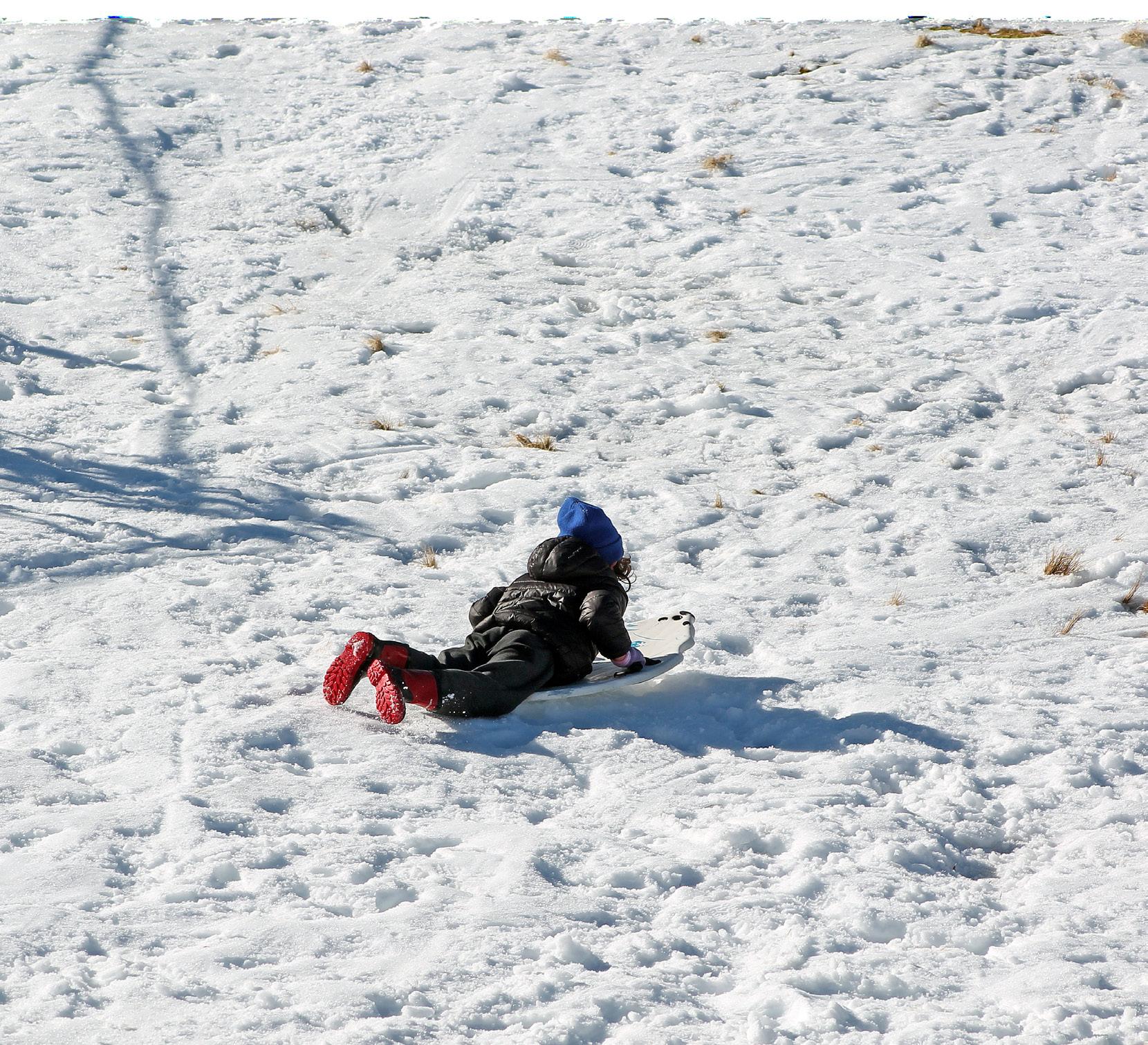

Taranaki’s Snowboard & Ski Area offers small beginner/intermediate, and larger off-piste adventure-type intermediate/advanced terrain; located on NZ’s most accessible alpine area.
The road to the club field carpark is fully sealed and well maintained. It is advisable to carry chains though if you have a 2WD as these will be required on occasion.
You will need to walk for about 30 minutes from the car park to the ski field so good alpine footwear is also essential.
Manganui is rated family friendly with gentle intermediate runs and open bowls, while also having outstanding steep runs for skiers and snowboarders.
The terrain goes from a sublime beginner-intermediate t-bar, with 140m vertical, to the nut-cracker rope tow which is about 300m of fall line skiing (think Treble Cone front side steepness).
Ski season is usually mid-June to early-October. During the last few years, Manganui has been the first field to open in the North Island. However, it is never crowded so is a great place to learn to ski or snowboard and get used to riding a T-bar before you venture to the busier ski fields like Ruapehu.
The ski area is low lying (1260m lower mtn) and experiences extreme rain events typical of Mt. Taranaki. This can quickly melt away or turn the snowpack isothermal.

With so much precipitation - ranking second in NZ - it’s also an ice climber’s mecca!
The lower mountain is an alpine tussock meadow (mowed), so only needs 20-30cm of snow cover to operate. This is generally why they typically open early.
Accommodation is provided in The Manganui Lodge at the base of the lift facilities and is available to anyone wanting to experience the mountain environment, not just skiers. Rebuilt in 2004 (after a fire destroyed the old lodge in 2002) it is spacious, comfortable, and warm. Perfect for families.
For those coming to ski this is the ideal ski-in ski-out accommodation. A goods lift (the ‘Flying Fox’) is available to transport your gear from 10 minutes into the 20-minute walk from the Plateau car park to the accommodation lodges.
While Manganui isn’t consistent, when it’s on, IT’S ON! - much like the Taranaki surf conditions. So, make sure to get there before the snow disappears again!
Prices $50 for a day pass Lift Hours are from 9:00am4:00pm.
Visit www.skitaranaki.co.nz for more information.




The goal of returning kiwi to the Kaitake Range, on Egmont National Park, is now a reality.
Ten brown kiwi were released at the back of the Kaitake Range, close to Pukeiti earlier this year.
After an absence of kiwi for a number of decades, this milestone was reached thanks to Restore Kaitake’s huge community predator control efforts across the Kaitake and Oākura communities.
The kiwi were raised at the Rotokare Sanctuary, the host site for the Taranaki Kōhanga Kiwi at Rotokare, a joint partnership between Taranaki Kiwi Trust and Taranaki’s only pest-free sanctuary, the Rotokare Scenic Reserve Trust.
“Having a safe environment free of introduced mammalian predators has been key in helping a number of threatened species, such as kiwi to thrive. We are thrilled to see the partnership reach this significant milestone, being able to support the recovery of kiwi populations across the Taranaki region,” says Rotokare Scenic Reserve Trust Conservation Manager Fiona Gordon.
The ten kiwi were blessed with one gifted the name Haimona by local hapū Ngā Mahanga a Tairi, after Simon Collins, cherished Sanctuary Manager of the Rotokare Scenic Reserve Trust who died during a sudden medical event in early 2021. The released kiwi are all monitored in their new home by the Taranaki Kiwi Trust.
Volunteers from the Kaitake Ranges Conservation Trust have played a critical role in bringing predator numbers on the range to a low level, making the area safer for kiwi to return.
“We are grateful to the Trust who are superheroes in this story. Their volunteers manage 18 traplines which have more than 100 ferret traps and 700 stoat traps. Our team services the remaining seven traplines and more than 200 possum traps. Collectively this work will ensure these taonga have a safe habitat so they can thrive,” says Taranaki Mounga co-project manager Sean Zieltjes.
Towards Predator-Free Taranaki has been working with landowners on farmland surrounding the range to remove mustelids (stoats, ferrets and weasels) – setting up more than 700 traps across approximately 5000 hectares. This is part of a 10-year plan to control mustelids on private land across the entire Taranaki ring plain.
Towards Predator-Free Taranaki project manager Toby Shanley says the kiwi release is an exciting milestone for all involved.
“We’ve been working hard alongside local landowners to ensure the kiwi are not only protected within the national park but will be safe if they venture outside the national park also.”

Dogs pose a significant risk to kiwi. No dogs are permitted on the Kaitake Range, as it is part of Egmont National Park.
“Kiwi may wander outside the park and to keep them safe we encourage neighbouring landowners to take their dogs to Kiwi Aversion Training,” says Department of Conservation Taranaki operations manager Gareth Hopkins. “Releasing kiwi to Kaitake is an historic milestone and this is collaborative conservation at its best. We all need to do our part to look after these special birds.”
Department of Conservation Kiwi Aversion Training has been completed in Oākura, with more training planned in the area. To register please contact the New Plymouth DOC office.
Taranaki Kiwi Trust is proud of the work already done by the local community to keep the kiwi safe and encourage locals to attend the kiwi aversion training in the future.
“Today has been many years in the making and we are thrilled that this highly engaged community are committed to keeping these precious taonga safe,” says Taranaki Kiwi Trust manager Celine Filbee.
“This is the outcome of ten years of work to establish a genetically diverse breeding population, and thousands of volunteer hours at Taranaki Kōhanga Kiwi at Rotokare, to reach our ultimate goal of having sufficient kiwi to be releasing them across the Taranaki region, returning kiwi to sites that have had their populations decimated. It is a significant achievement for the volunteers, staff and trustees of the two organisations, and we are honoured to have played one of the integral roles in this auspicious occasion.”

Kaitake Community Board chair Doug Hislop says the whole community has got right behind the protection of kiwi by trapping in their backyards, at their schools, parks and on the Kaitake Range.
“I am proud to be part of this community who care so much about their environment and restoring the Kaitake Range so these kiwi can thrive.” <<<
To date 125 kiwi have been released on to Egmont National Park. Seventeen of these were released in 2021.
Editor’s note: A number of kiwi releases were held and attended by representatives from Kaitake Ranges Conservation Trust, Taranaki Kiwi Trust, Rotokare Scenic Reserve Trust, Taranaki Mounga Project, Department of Conservation, Kaitake Community Board, Taranaki Regional Council, Oākura and Kaitake community champions, as well as students and teachers from Oākura, Ōmata and Coastal Taranaki Schools.
Tui MacDonald, Communications Manager Taranaki Mounga Project

When you have taken all the photos you can imagine of the mountain and the beach here is an idea you might want to toy with.

I carry my favourite Smurf in my pocket or camera bag, as you never know when you might come across the ideal mushroom or other perfect spot for a fun pic.
Maybe you are a car enthusiast, so take your favourite toy car to the beach and experiment with that. Aim for some low angles and work on getting the perspective as realistic as possible.
As a photographer, I like to experiment with all the elements that make photography exciting. One opportunity is to take shots of silhouettes against the morning or evening sun. However, when you can’t find any willing models to come along on a crisp winter’s morning dig out that old Barbie doll or Action man to take along instead.
If you find these too cumbersome to carry around, a smaller figurine can work just as well.






Play with different angles and try and get as close to the sand as possible. Use rocks or driftwood as props and incorporate the background into your composition.


I often carry this tiny VW van around with me and whether I am on the beach or in the bush I often look for a good spot that creates the right image.
FUN FACT:
Did you know a lot of car ads are shot using toy cars!

If you spend a lot of time in town and just want to take some fun photos during your lunch break, take a toy along. Finding creative avenues to take your street photography to a whole new level will brighten your day while amusing passerby and could even lead to an interesting conversation. Make sure to post your images on Instagram and use all the right hashtags, like #toyphotography.







Bring a cow to the
on a
put a
or even a Minion if you have one. The sky is the limit. Experiment with having the landmarks blurred in the background or blur your Smurf.
Greetings from


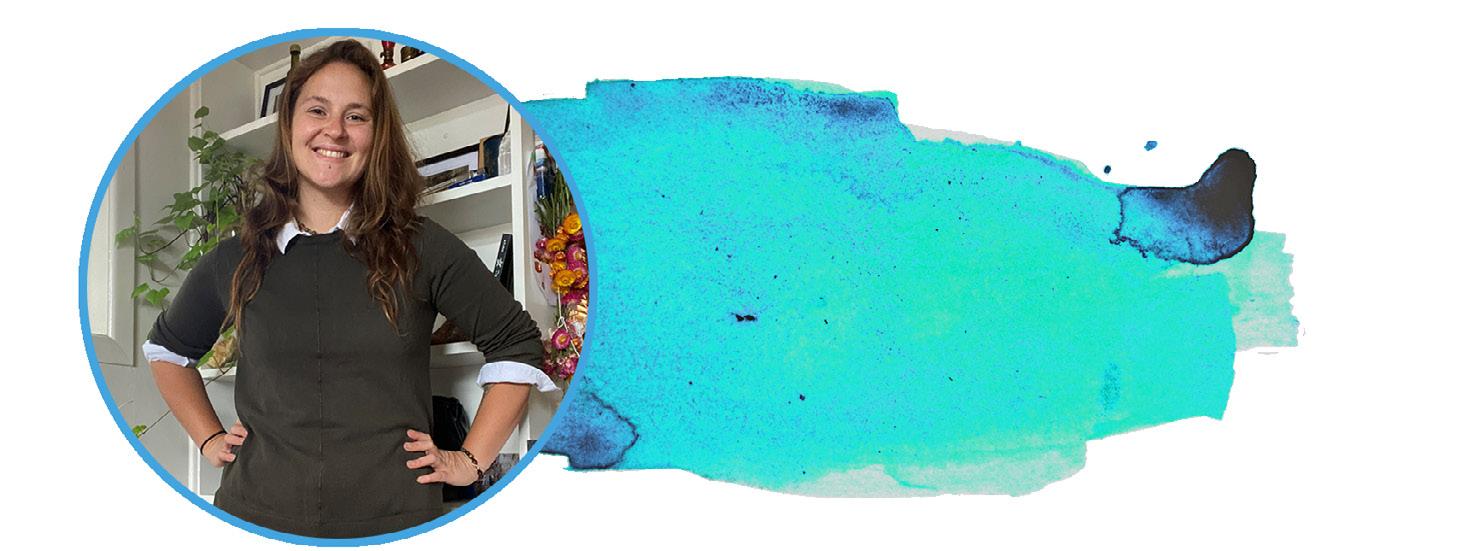
Where were you born and where did you grow up?
I was born in Melbourne, Australia to Kiwi parents hoping to create a better future for our family. We lived there until I was 10 when we moved over to Perth to be closer to family. At 15, we moved back to Te Puke, New Zealand where my parents first met and were married.
What first got you into art?
I had always been interested in creating, art being my favourite subject at school. However, it wasn’t until my mid 20s that I pushed through the fear of being ‘rubbish’ and actually committed to my personal creative practise.
Who was your art teacher and what was the most important thing you learnt from them?
I am predominantly self-taught, however in the last year I have done some informal study with an Australian artist, Ange Miller. Her approach is based around mindset and committing to process in order to discover your own personal style.
Who inspired you to become an artist?

I can’t say there was a specific person, it was more my own desire to express myself in a way that represented me on a soul level - beyond anything words could describe.
What inspires you and what do you enjoy painting the most?

My inspiration comes from limitless sources, but it is always based upon emotion. Whether it is colour and form in nature, the fascinating way mediums interact in the
adventure of creative process, the incredible work being produced by artists all around the world, even guidance or imagery I receive during meditation. I always paint abstract because of the freedom of nothing being ‘right’ or ‘wrong’.
How would you describe the art you typically create?
My work is always vibrant and colourful, full of texture and interest.

What piece of art are you most proud of and why?
I have a habit of calling everything I create my favourite, which I think is a sign that I’ve really refined my style. I recently created a collection I called ‘Cosmic Rays’ which I think as a whole would be the series of work I am most proud of.
What is your most important artist tool?
Tricky to pick just one tool but my tool of choice would be palette knives.
Is there something you couldn’t live without in your studio?
This is another tricky question, but one can never have too many jars.
What other pastimes do you have besides art?
I am a full-time mum to three young boys so that keeps me busy, however I also enjoy gardening and engage in my own spiritual practise.
What is the best advice you’ve been given?
I’m not sure it’s advice necessarily but I’ve found the phrase ‘where focus goes, energy flows’ very true.
What’s next for you?
I plan to continue creating from the heart, pouring more time into my creative business as my children grow and become more independent.
What would you tell someone wanting to get into art?
My advice would be simply to start - you’re going to create art you don’t like, but that will inform your style just as much as the work you love. Commit to regular practise and your skills will develop naturally.
How can people follow your work? You can find me on Instagram and Facebook, as well as my website.
www.instagram.com/creatingspace.nz www.facebook.com/creatingspace.newzealand www.creating-space-nz.myshopify.com



Where were you born and where did you grow up?
I was born and grew up in Johannesburg South Africa. I am married and have three young boys. Five years ago, we decided to go on a life-changing adventure and landed in New Plymouth, Taranaki.
What first got you into art?
I have been drawing, painting, and been involved in a creative atmosphere for as long as I can remember. My parents gave me a well-rounded childhood. I played sport, danced, and had wonderful cultural experiences with pottery lessons, art lessons and theatre, so the skills and passion for art were ignited from my primary school days. I then studied and worked as a Graphic Designer, that morphed into five years of fulltime photography before becoming a fine art.
Who was your art teacher and what is the most important thing you learnt from them?


Who inspired you to become an artist?
After leaving South Africa and starting over in a new country and new culture, I went through my own process of reinvention. Becoming a full-time artist was inspired by all the beautiful art and artists in Taranaki.
What inspires you and what do you enjoy creating the most?

My mom is my art teacher and a natural artist, continuing to teach and encourage me. I learnt the art of working with Embossing Pewter from Paula Bridges in South Africa almost 13 years ago. Paula’s attention to detail and exquisite craftmanship has always been inspirational to me. Paula would remind us in class: “we need to love our pewter into shape.” I hear her words every time I work.

My inspiration comes from things that bring me joy, like nature, sunsets, and artifacts with nostalgic or historical meaning. I love the idea of having something unique up on a wall for people to enjoy. I tend to get bored easily so have found it best to combine my work. I love to emboss on pewter and then after a few projects are done it feels great to pick up a brush and paint.
How would you describe the art that you typically create?
The embossing art that I create would best be described as luxurious, bespoke, handcrafted art with an acute attention to detail. Dates and names can be added to the pewter making it a unique custom piece.
What piece of art are you most proud of and why?
I am most proud of the 50cm Half Penny coin that I embossed. The pewter I work with comes on a roll and is an Alloy Metal; incredibly soft and malleable. I work on the front and back of the metal, flipping it over constantly, and this can create dents and buckles in the piece.


This 50cm diameter piece was extremely time consuming and required lots of ‘love’ to get it to where it needed to be. The result was a completely unique, large, and visually striking Half Penny Coin.
What is your most important artist tool?
There is a process when embossing on pewter. You cannot move on to the next step without completing the first, so there is not one specific tool or step that is more important than another. You need a variety of embossing tools for different techniques, oil, cleaning solutions, wax, patina, abrasive polish and varnish.
Is there something you couldn’t live without in your studio?
Music, and of course all my tools.

What other pastimes do you have besides art?
I love to travel and explore new places with my family. Coming from Johannesburg our nearest ocean was a 6-hour drive away, so I go to the beach every chance I get.
What is the best advice you have been given?
“That’s what art is.” When I get flustered or worried that a piece should be different to what it is, my husband reminds me that there is no wrong or right, especially
when it comes to art. It is all a beautiful expression of ourselves; sometimes it resonates with others and sometimes not and both are ok.
What’s next for you?
I am ready to step outside of Taranaki and share my embossed artwork with the rest of New Zealand.
What would you tell someone wanting to get into art?
If you are an artist, then make art. If you are looking to get into art for a hobby or to express some creativity then you cannot go wrong. Even the cavemen painted their hunts and now what is left behind is most valued. What is better than to leave a little piece of what you created behind for future generations to enjoy.
How can people follow your artwork?
Examples of my work are currently on Facebook and Instagram (Website is on its way).
Facebook: ArtVibesbyKerilyn
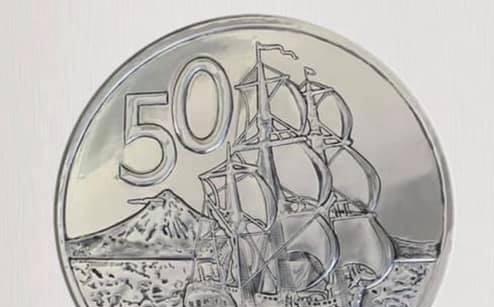



Shimmering Subversive Singalongs that are at once dire and lighthearted, weighted perfectly for a world stitched up and coming apart at the seams.
Two unique singer-songwriters locked in with an assiduous, litheheavy rhythm section to deliver a poignant social commentary powered by an unselfish desire to entertain.
Best known for antipodean-pop hits, Big Aroha and Yeah Nah, theSlacks are all over the folk-pop-rock spectrum, delivering danceable rhythms, joyful indie-pop and a refreshingly real vibe that resonates with questing minds in these testing times.

Where were you born and where did you grow up?
I was born in The Tron but Mum and Dad moved to Pihama in Taranaki before I turned one. Mark and I grew up living down Durham Road just out of Inglewood.
Who inspired you to get into music?
Dad always had the radio on or was singing which had an impact. He’s a bit of an authority on music trivia which I picked up from him. As far as musicians go, it was more a case of the music itself inspiring me. There’s a lot of wisdom to be found within popular music.
How would you describe the music that you typically create?
Joyful Indie-Pop, danceable rhythms, a touch of folk and country, and lyrically strong.

Who would you most like to collaborate with?
theSlacks is a very collaborative bandit’s how we’ve always operated - so we have worked with a lot of other people on our recordings and for live performances. I do like what I’ve read about the way Neil Young operates in the studio. Wouldn’t mind sitting in on a recording session with that guy.
If you could go open a show for any artist who would it be?
Probably Neil Young and Crazyhorse.
Do you sing in the shower? What songs?
Mamunia - Wings. Keeping The Faith - Billy Joel. The entire score for Jesus Christ Superstar - that’s got to be sung over the course of several showers otherwise I run out of water.


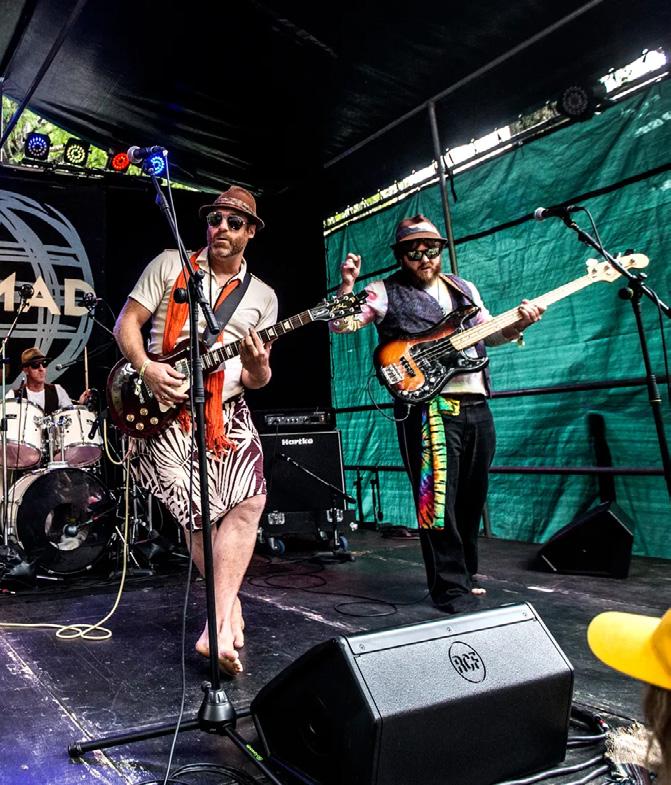
What other pastimes do you have besides music?
Writing is probably the main one. Not novels - I haven’t got the attention span for that kind of arduous creativity. Poetry because I like culling ideas down to simple, sharp words and phrases. It’s only natural to progress from there to writing songs.
Do you have a business or where do you work when you aren’t performing?
I’m a teacher in a position where I am teaching singing, mentoring school bands, and working with kids to make video and digital content for our school TV channel.


What is your favourite song to perform?
A brand new song of ours called Information Ape. Loads of fun.
What is your most amazing moment you have experienced as a musician?
There have been a few but WOMAD in 2018 was a real buzz. Amazing crowd and an incredibly well-run operation.
What is the best advice you’ve been given?
TCB - take care of business. You might just want to rock out but there’s all the mundane stuff that needs to be done.
What is one message you would give to younger people wanting to get into music?
Just go for it. The sooner you begin, the sooner you will improve. Try to stay confident and don’t stop!
What’s next for you?
We have just finished recording our third full-length album and we’re lining up our ducks for the release.
What are your social media details so people can follow and contact you?
theSlacks on Spotify, Youtube, Facebook - all the usual digital outlets. Links can be found on our website: www.theslacks.nz.



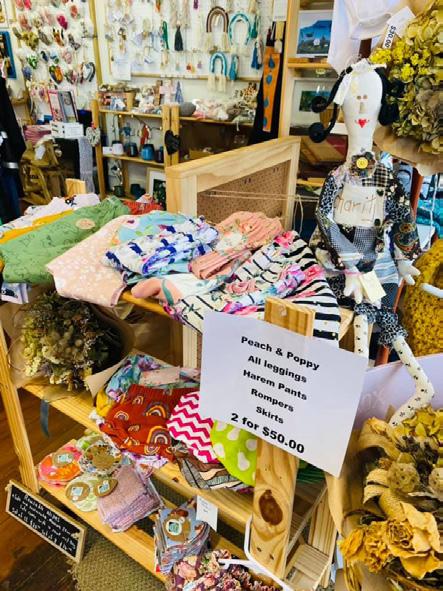
- A collection of crafters
Passionate About Authenticity, Transparency and Local Products
Enjoy, support, and help The Collective create an array of authentic, handcrafted products ‘just for you’. Presented in a recycled gift box with beautiful New Zealand artisan products made locally throughout the country. Either choose from one of the carefully selected gifts packs, make your own, or surprise a loved one with a gift voucher that can be used on the online store at www.thecollectivenz.co.nz
The Collective is a group of hand-made local crafters that is super excited to be bringing amazing locally created goodies to South Taranaki. There is so much to choose from so make sure to call in to their Union Street store and say ‘hello’ next time you are walking by.
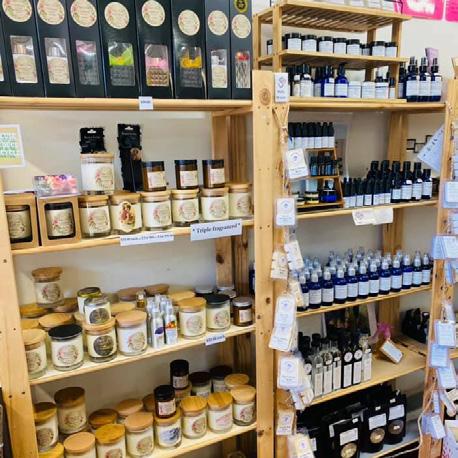




or





‘Low Carb & Actually Yum’ defines what these crackers are.
Handcrafted in Taranaki in Mister K’s Kitchen, these gourmet, low carb, tasty four-seed crackers will instantly see you going back for more.


“When researching nutritious food choices for both ourselves and our families, we recognised the muchloved cracker would be a perfect natural food choice. Convenient and easily digested, we set about our research. After many hours of research and trialling numerous

crackers, we unfortunately couldn’t find what we were looking for. We then decided to develop our own recipe that tasted good and offered many essential health benefits. Taking into consideration daily dietary requirements it was important our crackers were low carb, tasty and
Our focus was to use whole real foods…
Seeds are extremely nutritious and a great source of fibre. They also contain healthy monounsaturated fats, polyunsaturated fats, and many important vitamins, minerals, and antioxidants. Consumed as part of a healthy diet, seeds can help reduce blood sugar, cholesterol, and blood pressure. The other important ingredient is lupin flour. Lupin flour has anti-inflammatory properties, is a good source of protein and helps fight a range of chronic diseases.”
Nailed it!
Well, we think we have…
Super Mums creating Super Foods
Follow them on social media to see what they are up to next! @misterkskitchen
made of high-quality ingredients. As mums, we placed a real emphasis on providing sugar-free lunchbox options and as foodies who love to entertain with family and friends, whole real foods were essential.”


By Cheval Graham


The town centre has an everchanging face, with a revolving array of shops coming and going throughout the years. The hospitality sector has had a particularly tough time weathering the covid storm, with the flow on effects of staffing and sourcing product. However, during a time of adversity for the industry a new hub for socialising has enlivened the centre of Hawera.
We got to have a chat with the owner, Donella.

We want people to be able to gather, relax, and just spend time together. To create that European culture of communities coming together and getting to know one another. Because their lives are always so busy and hectic, it is nice to just be able to stop for a while and unwind.”
New bars and kitchens are always on the lookout for the most vibrant, hip, and memorable names. The Burnt Place is quite unique in that sense, why is that?
the aftermath of Hawera’s troubles with fire adorning the walls. This sets a vintage moody environment to kick back, relax, and enjoy.
But after so long out of the hospitality industry, why now and why Hawera?


“We have a background in hospitality, having been the owners of Morriesons Cafe & Bar for nearly nine years from 1995 - 2003. Our goal is to create what people regard as the third place in their daily lives - being home, work and The Burnt Place. We are a Bar and Kitchen, so our style as we see it is a bar that happens to serve great food.
“The name was a no brainer for us. Hawera takes it name from the Maori Village that was nearby called Te Hawera - translating into The Burnt Place. It ended up being a name that fit very well, as the town suffered two devastating fires in 1895 and 1912, resulting in the water tower being commissioned.”
The name becomes more illustrated once inside The Burnt Place, with historical prints displaying some of
“Since leaving Morriesons in 2003, we have always felt the pull back to hospitality. We spent a year travelling in 2019 and enjoyed the lifestyle of going down to a local bar in the afternoons and being able to have a drink, getting to know the locals, and have some food in a relaxing environment. We returned to Hawera in time for the local High School’s centennial and had international friends join us. But we felt that Hawera didn’t have anywhere to take them for a drink and catch up. Rather than just complain we decided to do something about it. With a determined attitude, a concept was borne out of passion and necessity. We could see the demand for a quality local bar and eatery so we went on the hunt for the ideal location


that was central for future customers’ work and home. Unfortunately, it didn’t come together without some roadblocks first...
The biggest setback was the time delays with local building authorities. Their requirement to follow the system as they see it, and not having the foresight or ability to look forward, was at times frustrating. However, we were lucky that our landlords and contractors supported us in this venture and so we pushed forward as fast as we could.”
Sadly, red tape has been holding back businesses of all industries as of late. On a positive note, the success of all the hard work is evident by the vibrant atmosphere and positive friendly attitude of the team at The Burnt Place and is attracting the attention of the wider community already.
“We have a great team and this has been recognised with the feedback we have received thus far. The reception has been so positive and welcoming. We are thrilled!”
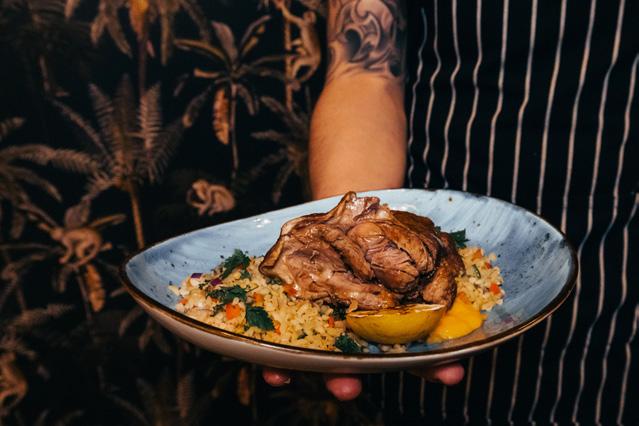
Will the menu stay consistent or are there plans to rotate menus or dishes from time to time?
“The menus will always continue to evolve. We love food and trying new concepts. Cocktails will change with the seasons.”
What kind of themes make up the menu selection?
“Our concept has always been to create a welcoming bar that serves great food. Our emphasis is on food that can be shared together. To graze while you chat. Take time reading over the menu and enjoy what’s on offer. There is no need to ‘dine and dash’, which has traditionally been the Kiwi way.”
What is it about Hawera and the greater South Taranaki region you enjoy so much?
“Hawera and South Taranaki have some amazing facilities that make it a wonderful place to live and raise a family. We felt very proud while overseas being able to describe our hometown and region. It is a place where you can be at the beach and then within an hour can be up the mountain. We are so lucky to live in a spot like this.”
Want to support local business, community and people? Then visit The Burnt Place at 191 High Street, Hawera.
Opening hours are:
Monday: CLOSED
Tuesday: CLOSED
Wednesday: 1 PM - 00:00
Thursday: 1 PM - 00:00
Friday: 1 PM - 00:00
Saturday: 08:00 - 00:00
Sunday: 08:00 - 16:00




Mon-Fri 6:30-4pm Sat 6:30-2pm




Lunch Shack love making them and we love eating them. From traditional favourites like Mince and Cheese and Smoked Fish, to gourmet and specialty pies with names like ‘BBQ Pulled Pork and Roast Vegetables’. You simply won’t find a better tasting pie for the price. What impresses us the most is that these pies are just packed with goodness, with plenty of filling. The Smoked Fish even includes egg which makes it the perfect meal.
The smell of hot pies and spectacular savouries keep enticing customers through the door every day. The classic sausage rolls, party savouries and American hot dogs have all been perfected and are a must-have for your morning snack.
If you prefer mouth-watering sweet stuff, there is something for everyone and it is indeed a hard choice to
pick a favourite. We reckon you just can’t beat the Lunch Shack Bee Stings and Lamingtons, but the donuts look very tempting if you are bold enough.
$3 drink Mondays are a favourite and on a cold winter’s day the freshly made soup is warmly welcomed. There is such a variety for everyone in the Lunch Shack’s cabinets. We really need to try the ‘corn beef doorstop sandwich lunch shack style made on fresh traditional sour dough’ for lunch one day. Though I think a good walk might be needed afterwards.
We can’t finish without making mention of the outstanding friendly customer service and Thea, Scott and the team at Lunch Shack always have a welcoming smile and are happy to help in any way they can. They also do catering so make sure to drop by and have a chat to them when you are in town.
You can also keep up to date on their Facebook page @lunchshack and Instagram @lunch_shack.



As soon as you step into this garden centre you get inspired by the smells, colours and textures of the plants, gift ideas and home décor on offer.
If you’re looking for landscaping ideas, Peter, Lyn and the team can put you in touch with landscape designers and help with your planting list. They have a huge selection of plants, trees, vege seedlings and are happy to order in special requests where they can. The team can also guide you with the planting with their green thumb service.
The Greenthumb Team is the perfect choice when you want to spruce up your garden, especially if you are looking to sell your home.
Whether you are looking for plant advice, landscaping ideas, or that special gift, Garden Edge is the place to go. I hear they also provide free gift wrapping!










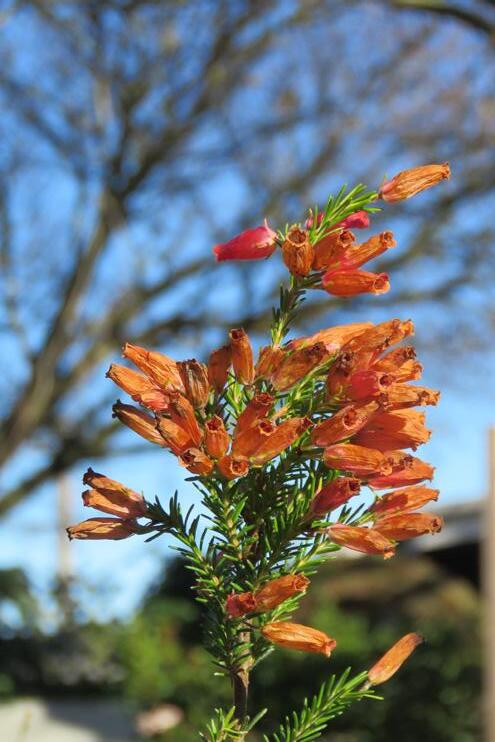





Where were you born and where did you grow up?
I was born in Hawera and grew up on a farm in Okaiawa (small rural town 15 minutes from Hawera). I was educated at Hawera High School and am proud to be a local girl.
At what age did you decide you wanted to be a hairdresser and why?
As young as 5 years old. My father had a business next to a hairdresser and I visited frequently. My mother also gave me the inspiration as she had also started hairdressing as a young adult for a short time (my grandmother’s hair was done on a weekly basis).

What were you doing before Mane Street Hair?
Before Mane Street Hair I owned another salon but sold that to head to Australia for a few years. I had worked in two other salons before becoming a salon owner. I started Mane on Victoria after returning from Australia in 2004.
What inspired you to start Mane Street Hair?
I started Mane on Victoria after returning from Australia in 2004, previously having owned another salon prior for 8 years. It has been a great achievement to have built and owned a successful business.
How did the name of the salon come about?
I first started the business ‘Mane on Victoria’ in the previous TAB. When I shifted to High Street, I was keen to keep the name ‘Mane’ and added ‘Hair’ as it linked together nicely.
Do you have a mentor and what is the best advice they have given you?
My husband Todd is my mentor. There have been many who have influenced me with my career over the years.




What training did you need to do to become a hairdresser?
I needed to do an apprenticeship in a local salon for three years, along with weekly visits to the Polytech in New Plymouth to complete assessments.
What personality traits do you have that make you a good hairdresser?
The love for talking to people and being a good communicator. Being energic, motivated and having a positive attitude.

What do you love the most about being a hairdresser?

Meeting new people, being creative, making people feel great and that is not always just about their hair.
What is your favourite type of music to play in the salon?
Hits of the eighties and nineties and whatever Spotify presents.
What are your hobbies outside of hairdressing?
Spending time with my family of four girls, camping, walking, baking, dinner out with friends, holidaying in the South Island.
What would you tell someone wanting to become a hairdresser?
Do it! Get yourself some salon experience and New Plymouth offers a fabulous first year course at Western Institute of Technology. If you enjoy being creative and are motivated then we can teach you the rest.<<<




Devon Towers is a year 13 student from Hawera High School and as part of the Lion Foundation Young Enterprise Scheme she has started a business called The Pony Place. Devon is offering pony rides - $5 for 10 minutes or $10 for 30 minutes - and can also cater for children’s birthday parties or other events.
Ponies used are based on the rider’s height. All riders are led to start with and then if they are confident can choose to ride alongside Devon and have full control of the reins. Games are set up so the rider can use different muscles and become familiar working with ponies. The skills required are easy and can lead to joining the Pony club (no pony needed).
Harness driving is in a cart using long reins to steer. Everyone will be led to start with and can then choose to drive alongside Chevon if confident. Driving a pony is simple and all hand work. Harness driving can lead into joining Taranaki Kidz Kartz based at the Hawera racecourse. The club travels to Palmerston North, New Plymouth, Stratford, Cambridge, Auckland, and there are great opportunities to also go to Christchurch and Australia. No pony is needed to join.

Follow Devon on Facebook (@ThePony Place) to keep up to date with her progress or text her on 020 4138 3717 to book a day and time for your pony ride or harness drive.






Ivanna started Better Half NZ as a way for her to connect with her passion and creativity. The business concept is a Paper Art Studio focusing on customized party creative stationery, cake toppers, cards, and small things that will add something special to someone’s important day. Ivanna puts love and care into every detail to ensure her customers receive a high-quality product.

Ivanna Molina from Venezuela has now lived in New Zealand for almost four years, and her business ‘Better Half NZ’ can be visited on Instagram (@betterhalfnz) and Facebook (BetterHalfNZ). Get something special created for your loved one’s next special day by emailing Ivanna at ivanna.molina@gmail.com.





Ōkaiawa is a rural community in South Taranaki, located about 14 kilometres north-west of Hāwera, close to the Inaka River.


Ōkaiawa Public School was established in 1884. The original schoolhouse was built of wood and iron, with two classrooms, two porches, and a teachers’ residence on site. The school could accommodate a roll of 120 children.
In the 1880s, Thomas Joll established a chain of private dairy factories, based in Ōkaiawa. He opened a creamery three kilometres from the settlement in 1894. The chain became a cooperative when Joll died in 1908, and Joll was commemorated with a marble
bust at the local park named in his honour.
Frank Bremer, a Taranaki farmer originally from Adelaide, purchased a property in Ōkaiawa in 1890. His farm covered 284 acres of freehold land and 316 of leasehold land. He became a breeder of high-class draught horses which won several races, was president of the local racing club, and milked about 100 cows.
By 1908, the township had a hotel, a store, a butchery, and electricity. The farming community was growing, and the school roll was averaging about 92 children.



Eleven local men died in World War I and dozens of others served in the war. A roll of honour was unveiled at the school in 1919 for two ex-pupils who died and 39 other ex-pupils who served. Another roll of honour was unveiled at the local St Aidan’s Anglican Church the following year. A memorial statue was unveiled at Joll Park on Anzac Day 1922 for the town’s fallen soldiers. An individual memorial was erected at Ōkaiawa Cemetery for Frank Williams, one of the men who died.


By 1922, 198 students were enrolled in Ōkaiawa School. At an annual school picnic, parents were reminded to send their children to school ‘regularly’ to keep attendance high. Three local men died in World War II, and 52 others served in the war. A memorial on a brick feature at the school pool was unveiled by Minister of Internal Affairs William Bodkin on 10 March 1952, listing all the men’s names.
Ōkaiawa School celebrated its 75th Jubilee in 1958. By this stage, many students were travelling to Manaia High School for secondary education.


The New Zealand Government proposed merging Ōkaiawa School with Manaia School in 2004. Ōkaiawa School closed permanently in 2009.
The World War II plaque at the school was moved to a new wall of river stones at Ōkaiawa Cemetery in 2009. The location of the school’s World War I memorial is unknown.
A woman was charged with arson and endangering life, after a suspicious house fire in Ōkaiawa in February 2021. <<<





Helen McLorinan specialises in drawings of buildings that are significant or hold a special memory for you, preserving your history onto paper. Commissions are welcome if you have a particular building you would like sketched (scamped).
Sketched early July 2021. Helen plans on gifting the original to the Theatre and giving them rights to print from if desired.
Sketched from one of Helen’s photos, prompted by a local shop owner who knew it was going to be demolished for a rebuild. Staedtler ink & coloured pencil drawing original for sale $120. Prints available from $25 each.
Memories of Dunbars in the 80-90s. Sketched from a photo gifted to Helen by one of the many owners of this store. Original now sold. Prints available from $25 each.
To contact Helen visit her website page, social media, or call by where she works at Janes Gallery, 30 Devon Street East, New Plymouth.
www.helenmclorinan.com
Facebook: Helen McLorinan Artist or Little Nikau
Instagram: Little Nikau


By Cheval Graham

What does one expect from a council? They do take your rates which are increasing year on year, but with personal spending getting tighter and tighter from tax, costs of goods and rising utilities, what does the council do with your spare cash?
Hawera has been well ahead when it comes to water, rubbish, roading and infrastructure. But as more councils come under scrutiny for not keeping up with these issues, as well as mounting more costs on to ratepayers, it’s time to look closer at the vanity projects. These are the ones where it is a grey area of spending, one of which has had an eyewatering cost associated with it.
Anyone would agree that the CBD and surrounds always benefits from its concrete and monochromatic eyesores getting a makeover and is usually in favour of community and school art projects, trees, or gardens. But the idea was to create a nicer looking entrance to Hāwera. The SH3 rail bridge no.50, commonly referred to as the subway overpass, is the iron bridge which spans Hāwera’s southern entrance for those travelling from Patea or Whanganui and it was decided that it needed an artistic flare.
So, the bridge was to get a makeover; get a design, slap on some paint, and away she goes. A simple task, right? Not so easy when there is a state highway below a highly active rail bridge. It was not going to come cheap, and so the consultation began.
Who was consulted?
NZ KiwiRail as owner of the asset.
Te Hāwera Community Board on behalf of the community and as a financial contributor.
Hāwera Bizlink Committee as a financial contributor.
Members of Te Korowai o Ngāruahine.

Te Runanga o Ngati Ruanui Trust as Mana Whenua.
Members of Hapōtiki Hapu
Hāwera’sart price tag
Please note, no wider community public consultation was held about this project. The main contributors to the project and wider district arts projects are the council, community board/s (funded by the ratepayer) and Bizlink (funded by the ratepayer).
For a small rail bridge entering the southern part of Hawera that you may manage to glimpse at for a few seconds, what did it cost?
$73,165
This is an astronomical figure for a mural that most people will not be able to fully appreciate.
So how did it come to such a high figure? The estimated work done was expected to cost $57,283.00 during the planning stages, so that is around a $15,000 difference.
When you study the budget document, some of the deficit is reversed with an income portion. This can be misleading as internal income is still an internal expenditure. However, allocated in whatever council department the external sources of income are listed as Bizlink and KiwiRail.
Granted, KiwiRail is totally removed from local government so the $5000 would be a genuine external contribution.
But how about Bizlink?
Is Bizlink an external entity or another branch of the council? To find this out, we must first look at what entity Bizlink is.
Bizlink Hāwera is established as an Incorporated Society, with a voluntary executive committee made up of local businesspeople. Bizlink has two employees who are both coordinators. So, if they are not run by the council, who funds Bizlink?
Bizlink runs on a targeted rate system. All businesses paying a commercial rate within the set boundaries are automatic members. South Taranaki District Council collects this on Bizlink’s behalf through the commercial rates of the business.

Any person or business not in a commercial premise, or outside the town boundary, can choose to be a member and pay a nontargeted rate. Bizlink is not a part of South Taranaki District Council but is directly funded through a levy on the commercial rates, so technically it is a rates-funded society.
What do you think of the rail over bridge? Have you seen it? Was it worth the $70,000 plus of ratepayer money to add an artistic work to a busy state highway? What would you like to have seen the $70,000 allocated to in town?
How about a central mural we can all see and appreciate?
Hawera’s town square has now got one thanks to the work of Bizlink, who drive some of the town’s past, present and future beautification projects. Bizlink supports these on a case-bycase basis and is always looking for ways to help enhance the appearance of our town. They are responsible for the bookcase mural, the festoon lights in the Town Square, the Hāwera Flag Trax, and gave support funding to the Whisper Dishes at King Edward Park, Hāwera and South Road Hāwera bridge mural.

They have also supported businesses to enhance their overall appearance through beautification funding.
Hāwera now has a mural ‘Bookcase -A Secret World’ in the centre of town for all to see, behold, critique, or appreciate. But how much did this one cost?
For this project, Bizlink was able to receive some support funding: $1349.25 from Creative Communities (rates funded) $5000 from Te Hāwera Community Board (rates funded) $(not confirmed) from Bizlink Hawera (rates funded)
Bizlink did confirm that they are working on some other exciting public art initiatives but was not able to confirm what these were. We understand that it is inevitable that rates will always rise over time. However, how high is always based on the income versus expense. When justifying the expenses, big and small, to the wider community, the costs for art projects like the ones mentioned above soon mount up. We believe that non-essential services need to be cautiously approached as the difference between art and waste can sometimes be too close to call.<<<


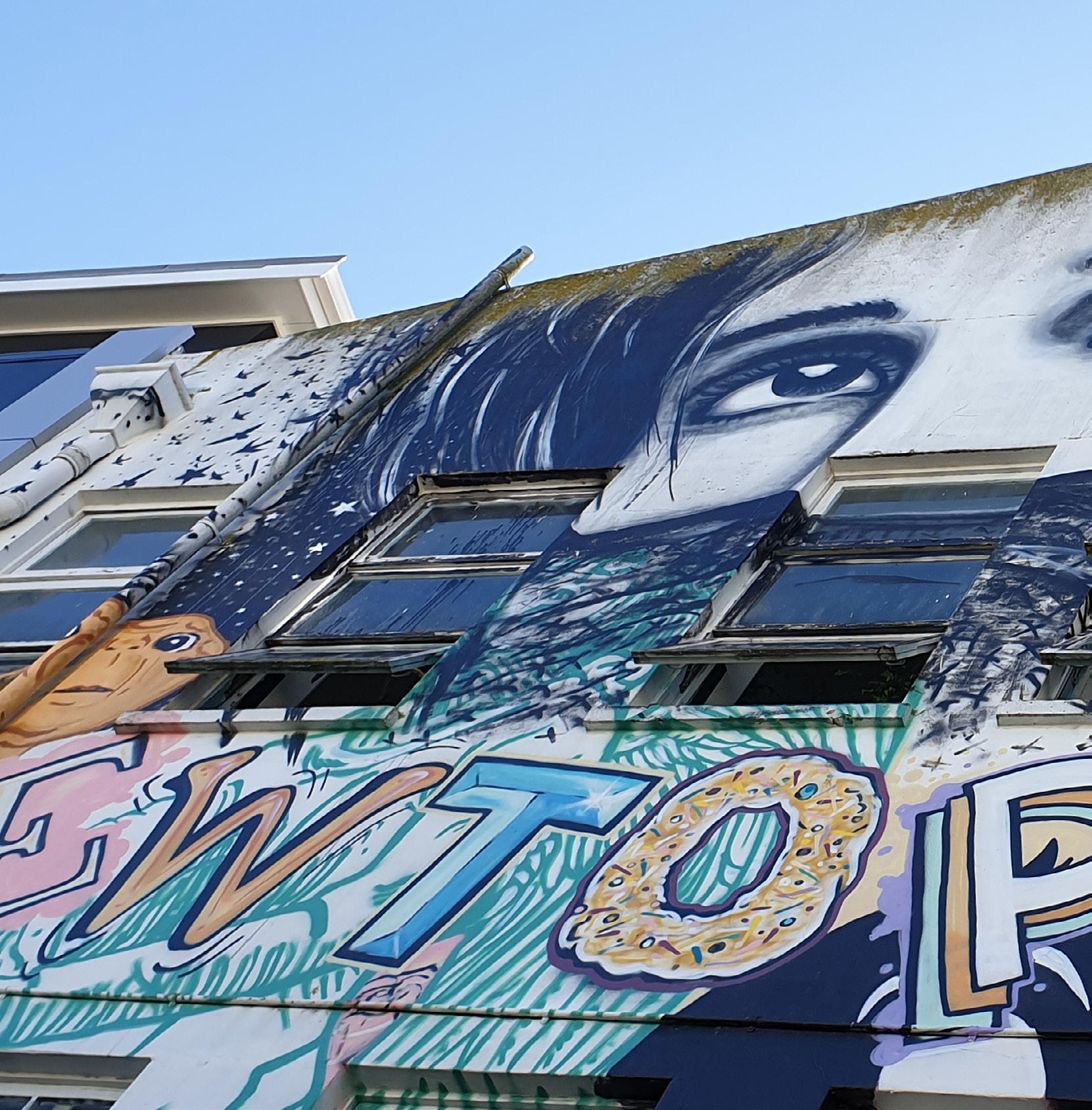

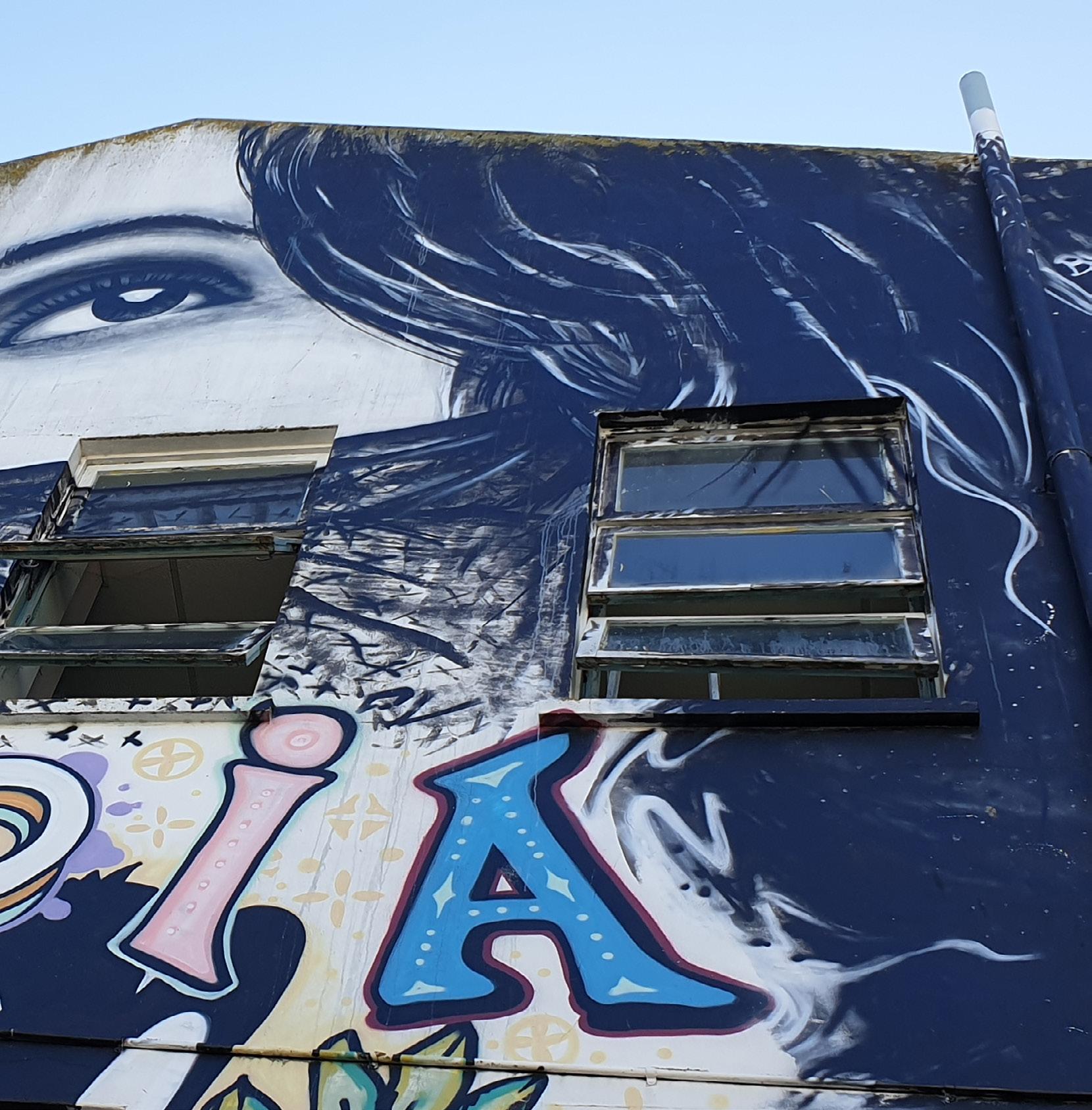






A Bridge Street scene from the early 1900s and a more recent one of the Bridge Street shops. The old pub still exists there but has had a more modern facade fitted in the 1960’s. Mikes second museum is the cream double-story building on the right-hand side.
The Eltham and Districts Historical Society Inc (NZ) was formed in 1972 by a group of enthusiastic Eltham residents. Some of them have now passed on, so a new group of Volunteers have joined those that still have an active part in the Society. Since then, the Society’s collection has continued to grow and rely heavily on donations, funding and of course membership fees to help with the preservation of those Collections.

Do you have a grandparent who was keen on music and played in the band. Here is the Eltham Brass Band circa 1930s

A very old photo. This is Chew Chong’s dairy factory, known as the ‘Jubilee Factory’, for Queen Victoria’s Jubilee and was opened in 1887. The Society still have copies of the book ‘The Life and Times of Chew Chong’ which sells at $25 and it has lots of interesting history of Eltham in it. It was written by Don Drabble.

Before Stanners Street was built, this is how it looked. The street was opened/constructed in 1909, up to George Street. In 1960 Stanners Street was pushed through to Clifford Road.
If you can assist in any way, please contact the Society through their Facebook page (Eltham & Districts Historical Society Inc (NZ) or go to www. givealittle.co.nz/org/elthamhistoricalsociety.


“I spied this house in Patea many months back, totally obscured with only the slightest glimpse from the main road. Most would never know it’s there, as it is only accessible from the side road. Even then you can’t see it behind all the trees/ shrubs etc. On this day I had decided to go and take a few photos of this old girl.”
- Denise Flay

Followers of the Facebook page Taranaki Old & Abandoned Houses, Buildings & Machinery comment that this house belongs to the Marino’s whanau. It was such a beautiful loving home and many local residents have fond memories of playing here as children. It must have strong bones which is why it is still standing and even the roof is standing proud after all these years. The old road in front of the house that is now partly overgrown used to be the main road. The old bridge started on the street opposite.
Photos can be seen at Aotea Utanganui –Museum of South Taranaki.




Visit Taranaki Old & Abandoned Houses, Buildings & Machinery on Facebook for more great photos.




This building on 109 High Street, Hawera has a fascinating history, as can be seen in the press clipping and by the number of comments on the Facebook Page Taranaki Old & Abandoned Houses, Buildings & Machinery.
The building was constructed for Messrs George Syme and Co, a company founded in Hawera in 1880, as a furniture store. It later operated as Purser’s Furniture Shop, then Farmers Trading Co, and then as G S Parkinson and Co. The rear part of the building was a billiards room and was built before the main front part of the shop.
The building has historical value for its association with George Syme, a benefactor of the town, and for a mix of retail

Star, Volume XLVII, 17 October 1927
uses over 60 years. It has technical interest for the trussed roof, with lanterns to light the billiard room below in the case of the older rear part, and the shop showroom in the case of the front part.
Facebook comments:
“Gordan Hughson had a furniture shop there for a while.”
“It was Farmer’s Trading back in the 60’s up until it closed, maybe in the late 80’s early 90’s. It was Parkinson’s furniture shop for a while after that and then more recently it was a fruit shop.”
“FCOS was next door on the RHS. The other side was Noel Newman’s UFS dispensary back in the day. Eric Johnson & La Nuova wool shop were between the chemist and the Egmont hotel.”
“Radio Taranaki 2ZH was upstairs next door.”
“I do remember going up there to see Brian Vickery about 15 years ago.” Visit Taranaki Old & Abandoned Houses, Buildings & Machinery on Facebook for




“We are driven by passion and are committed in heart and in mind. It’s passion that holds our standards high.”
The name Tapuae is an indigenous Māori name that represents both the place of origin and the people of the land. The meaning of Tapuae translated is “Footprint”
The branding of Tapuae Spring Water has been purposely created to capture the essence of the surrounding area, whilst honouring the journey that the water has taken from the peaks of Mount Taranaki to the Tapuae valley.
Tapuae passionately uphold and embrace the Mana that is associated with this living water.
Tapuae Spring Water begins with rain falling on Mount Taranaki in the pristine country of New Zealand.
The water flows through one of the last virgin ecosystems, trickling through layers of volcanic rock until reaching an artesian aquifer that sits deep below the Earth’s surface located at the base of the Tapuae valley, surrounded by bushland, rivers and lush green paddocks.
As the water travels underground, it is naturally filtered through thousands of layers of porous volcanic rock and migrates through layers of sediment absorbing minerals and collecting dissolved salts on its journey.
The resulting product is rich in electrolytes, antioxidants and naturally endowed with a generous amount of essential trace minerals, giving the spring water its pure taste and therapeutic value.
The mineral enriched water from this natural and pure resource has an ideal combination of properties that balance its great taste whilst providing all the essential ingredients to promote health and wellbeing.
With more and more municipal water being available on today’s market, it can be hard to be sure of the quality of water products. Tapuae guarantee clean living water straight from their pure natural source. Test results from certified laboratories show that this spring water holds natural levels of minerals without any traces of bacteria or harmful chemicals. This means Tapuae water has a crystal-clear appearance and genuine pure taste, enabling the body to function the
Tapuae Spring Water begins with rain falling on Mount Taranaki in the pristine country of New Zealand.
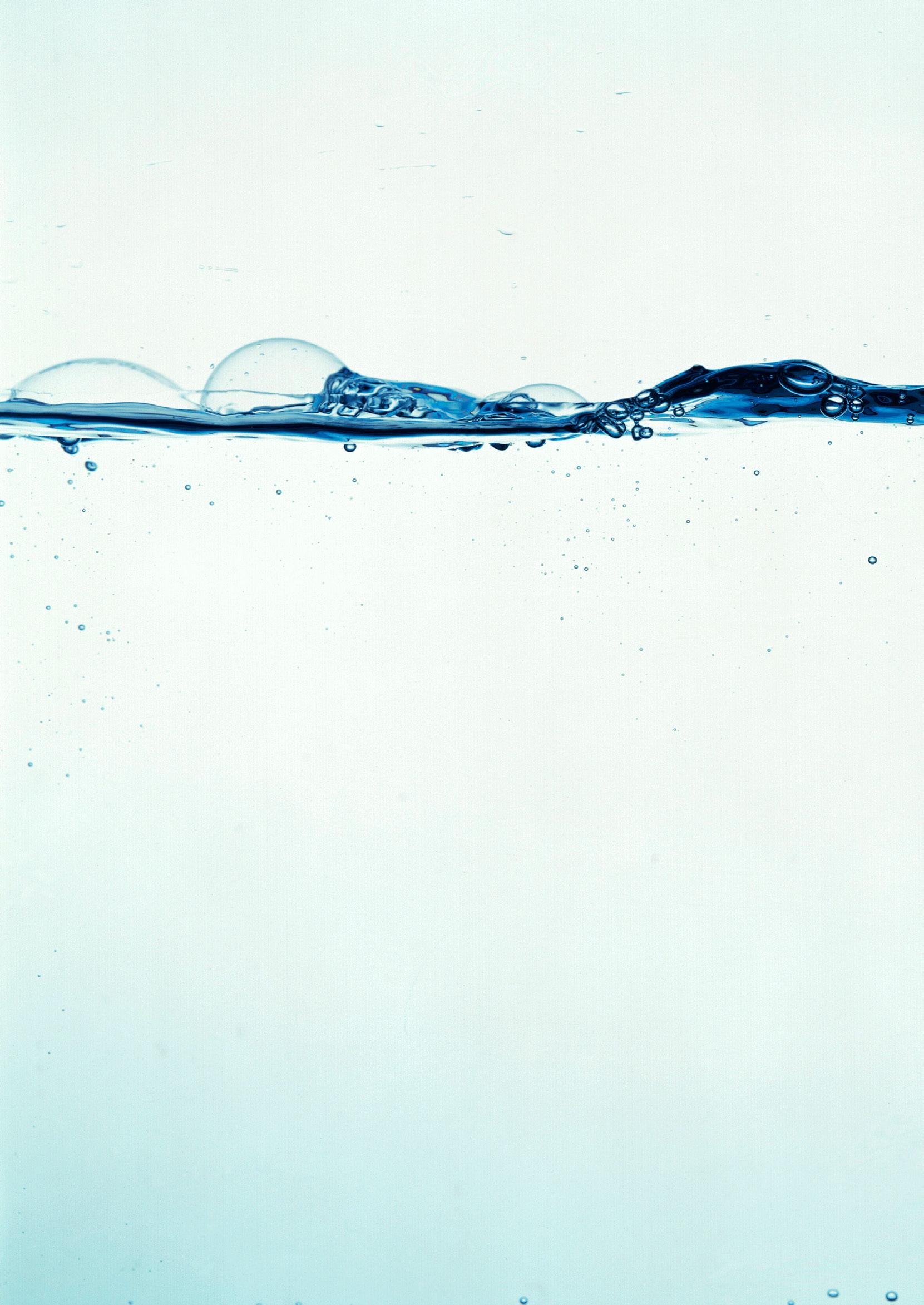



way it is meant to, along with flushing out harmful toxins and aiding the body with proper nourishment and hydration.
Tapuae’s self-service spring water dispenser has been designed and engineered in order to make it easy to operate. You can bring your own container or purchase one directly from the dispenser and fill a minimum of 10 litres or up to 40 litres in one transaction.
The price of the spring water is $0.50 per litre.


Visit
Travelling through some of the world’s poorest countries, Crystal was struck by how difficult it was for those communities to source drinking water. She was humbled to realise that a steady supply of clean water had always been right at her doorstep, in the form of the Tapuae spring on her family land.
A local secret for generations, which she desires to make available to everyone. Crystal is aware of the consciousness that water holds so has purposely created Tapuae Spring Water with the intention of gratitude and love.



Tapuae Spring Water was purposely created with the intention of gratitude and love.


By eRiQ
A storm is brewing the world a whirly cauldron which crafty creation can wither the weather when darkness prevails upon us all
Outside the skies are turning black
Inside our souls we’re fighting back against the power of the cloud
By Justine Joyce Olckers
You hold my hand
You keep me safe
From all the monsters Inside this world
You keep me smiling I am happy I am safe in your arms
You won’t be here forever
This scares me
Stay a while longer
Keep me safe
Anyone can make you smile... Many can make you cry...
But it takes someone special...
To make you smile with tears in your eyes.
Colin John


Her life was getting darker and the path was getting dangerous...
She thought her life was meant to be pain and suffering till the end...
She was about to cut the last strings that held her... but before she let go she looked up ...one last time...
She saw a man screaming and pulling the rope that held her... Something woke up inside her that day...
She didn’t want to cut the string anymore...
She held on as he pulled her back to the Little gift called LIFE....

By eRiQ
Life’s not simply BLACK or WHITE we can’t even just stay in the GRAY there’s too much colour to stay divided we must accept all ... No more THIS or THAT
Dark skies bring lightning
Dark souls keep fighting but all we are is one big human race!
By Justine Joyce Olckers
It’s ok to back away
It’s ok to hold your words
It’s ok to ask people not to disturb you
When you are feeling down
Never give up
Just never give up
It’s ok to be brave
It’s also ok if you are not feeling ok
It’s ok to shy away
Never give up
Just never give up

By Justine J Olckers and eRiQ Quaadgras
Check out the two stories in the children’s book series by New Zealand Author Justine J. Olckers and illustrator eRiQ Quaadgras. They are available on Amazon. Follow the adventures of Morty Muligan the Magnificent Mole and Flintie the Frog..





By Justine J. Olckers
A young woman’s life is turned upside down as she stumbles across a mystery involving sketchy government agencies, friends with questionable motives, and even members of her family. Apart from the fact that she can no longer trust anyone, there still are a handful of those who want nothing more than to keep her safe, even though some of them aren’t human at all. She finds out hidden truths of who her family really were and why she hadn’t met her father before. With special forces involved and strange alien-like creatures from Titan; this book is sure to keep your suspense levels on a high.
A
of poetry and short stories
By Justine J. Olckers
A personal collection of poetry and short stories, inspired by Oscar Wilde. Poetry is the window to my soul and writing is the view
Published by eQuBe - Available on Amazon or by emailing kiwiolckers@gmail.com Facebook: Justine Joyce Olckers - Author or Instagram: justineolckers





By Justine J. Olckers
When you see people being bullied or read about it, you can’t help but get this hollow feeling in your heart. The sadness engulfs us as we feel their pain. Whether it is physical or mental bullying, or even cyber bullying, it is all so bad. I decided to write this chapbook to help motivate people with low selfesteem due to bullying. To encourage people to stand up and believe in themselves. I hope in my heart that this book reaches those that have had to face the challenges of bullying and that it helps their journey a little.
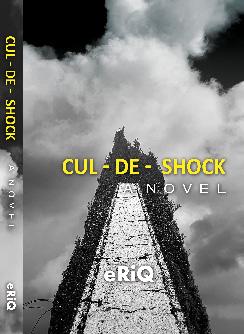
By eRiQ Quaadgras
eRiQ’s first novel focuses on the people of Kõwhatu, a small rural town in Taranaki, who wake up to a terrible tragedy in their community. When they have recovered from the initial shock, they soon realise there is more to it. A local journalist and one of the new police officers find themselves working together in order to find out what’s really going on in the cul-de-sacs.
“Cul-de-Shock has all the elements - suspense, well defined characters, great observations of people and places, riddles, some science, great quotes and then the two seemingly separate stories (cul-de-sac murders and Bowie twins) linked together in a very clever way. Recommend this read whole-heartedly.”
By eRiQ Quaadgras
Mystery, murder and a quest to deliver the mysterious ‘GITA’ USB stick. Tarquin and Maddy, the Taranaki duo, find themselves on another action-packed adventure that leads them to solving the riddles of life? The horrible events of the 2019 ‘Kõwhatu Killings had escalated Tarquin’s anxiety but with the events that unfold during this mystery, he has a chance to become more in tune with the ‘higher being’. He starts to reflect on that ‘secret’ power within. In the end, there is nothing like a cup of relaxing tea to settle your soul.



“Shock-Tea is a fun sequel that brings a new case for Tarquin and Maddie. Cleverly written, connecting current real events to fiction. Not too serious despite tackling serious topics. The riddles kept me guessing and entertained throughout the story, excited for the next one. Would definitely recommend it.”
By eRiQ Quaadgras
Get ready for the explosive finale to eRiQ’s ‘Shock Trilogy’. It was the end of a crazy year for the world. It sure had been one hell of a ride for Tarquin and Maddy. When a mysterious man turns up on their doorstep he reveals more than they were prepared for. A series of events then combine the Tree of Life, Shakespeare, time travel and tarot cards to provide the answers. Tarquin believed he might see his dad again, one day. For now, he closed the curtains on the ‘unyear’ that was 2020.
Make sure to follow his Instagram account ( eriq_nz_author ) for more details!


Where were you born and where did you grow up?
I was born and grew up in Gauteng, South Africa.
What first got you into writing and at what age?
I have been writing ever since I was a child and could write. I never had anyone who inspired me, it was just something I believe I was ‘born to do’.
Did you have a teacher who inspired you and what is the most important thing you learnt from them?
I am lucky to have gone to a private ‘artsy’ school. My English and Drama teachers would be my high school inspirations for writing. My English teacher despised the word ‘very’ and urged everyone to stop using ‘intensifiers’, and made sure we spelt ‘a lot’ correctly. These were his major pet peeves. They also encouraged me to read a range of books. Read, read, and read some more. My Drama teacher enjoyed reading my poetry and gave me tips and tricks to make it sound better. I was fortunate to have two amazing teachers that I still look up to so much.
What is the best advice you’ve been given?
The best advice comes from my editor who says, “keep writing and don’t miss one day or you will lose the flow.”
If you could tell your younger writing self anything what would it be?
“Believe in yourself and keep writing. Take the good criticism to heart.”
What is your fondest memory?
Finding an Oscar Wilde book in the U.K. A great thick book of all his work.
Why do you love being a writer?
It gives me a chance to escape reality and live in my own make-believe world.
What do you enjoy writing the most?
I have always loved poetry and it is the first writing I did as a child.
What piece of writing are you most proud of and why?
My novella ‘Letters to Titan’ because it was my first writing achievement.
What is your favourite quote?
‘I don’t know where I am going but I am on my way’ by Carl Sagan. I even have this tattooed on the back of my leg.
As a writer what would you choose as your mascot/avatar/spirit animal?
I don’t have a mascot that cheers me on BUT I have always seen my own characters in my books as my ‘mascots’ and make-believe friends. Those characters who aren’t real but get me. They give me a reason to wake up and write some more.
What other hobbies do you enjoy when you aren’t writing?
I have grown to love hiking. As a child it was something I despised, but now I love it. My other hobbies are photography and cooking.
Where is your favourite place to go for inspiration?
This is a tricky question because I have a lot of places. Music is more of an influence on my writing than places. As a writer you see a story in everything but with the right music you have a story.
What is your favourite adult book? Spud by John van de Ruit and anything by Shakespeare. I love that style of writing.
What is your favourite childhood book?
I don’t have a favourite but have fond memories of my mum and grandparents making up stories that had me believing in them. I suppose that is why I now have such a great imagination.
What is the first book that made you cry?
It would have to be Spud. When the little guy died from meningitis I cried like a baby. This was probably because I knew there was truth to Spud.

What music do you listen to when you are writing?
A variety. The key to great writing is to listen to every genre.
I can sometimes listen to ‘Beautiful’ by Karen Zoid on repeat while writing a whole chapter and not get bored, and then for the next chapter I will jump to Chopin classical music. It really depends on what my characters are doing and where my mind is.
Do you have a favourite spot to sit when you are writing?
I used to always sit on my bed and write but now sit at the dining room table, as I get less tired. I sit up straight and it makes me think straight. Sometimes when I get a writer’s block I tend to shift around until I can feel my writing again. Usually sitting outside for some fresh air gets me back in the game.
What is next for you?
I am busy with loads of projects. I am finishing off a few children’s books, a short story collection and have more ideas in the pipeline.
What would you tell someone wanting to get into writing?
If you want to write, then research your topic. If you are not feeling your writing anymore then put it down and move on to something else. Do not throw any writing away. Invest in a good editor. Don’t make writing a task, make it fun. You will get people who love your writing and others who hate it. The only opinions that matter are your own and your editor, don’t be discouraged by anyone else. Always carry a pen and notebook with you. It is such a waste when you get a great idea but have nowhere to write it down and then it is forgotten.
How can people follow your work?
Facebook: Justine Joyce Olckers – Author
Instagram: justineolckers
Amazon: Justine J Olckers
Where were you born and where did you grow up?
Little Erik was pushed into the world in the city of The Hague, the Netherlands. Until high school that was where I grew up before moving to Voorburg, Leidschendam and Leiden.
What first got you into writing and at what age?
Writing has always been a passion for me. In Primary School I wrote short stories and had my first ever comic strip printed in the school paper. I started writing a journal from 1977 and have since built up quite a library of them that I can use for inspiration.
Did you have a teacher who inspired you and what is the most important thing you learnt from them?
I can’t say that there were any teachers that inspired me to write. As an artist my high school art teacher, Mrs. Vucsan, was an inspiration for my drawing and illustration.
What is the best advice you’ve been given?
The past doesn’t equal the future.
If you could tell your younger writing self anything what would it be?
Keep writing and collect things that you might be using in your future writing. Make sure to back up your digital journal ‘back up’ (I lost SEVEN years due to a computer glitch that wiped all those entries, even from the back up).
What is your fondest memory?
My first trip to Disneyland in 1977 with my grandmother when I was ten years old.
Why do you love being a writer?
Writing is a form of therapy. It’s a way to formulate the complicated thoughts that spin around in my brain each day. For years I had kept my writing to myself, fearing it wouldn’t be good enough to share – worrying about any negative reactions. I am glad I have found the strength to be able to overcome that fear to the point where I have been able to publish some of my stories.
What do you enjoy writing the most?
Any stories loosely based on my personal experiences, with humour added and a touch of mystery. Whether it is poetry, a short story, a book, or even an article. I enjoy playing with words – letting them dance on the page, hoping someone will get enjoyment from even one sentence.
What piece of writing are you most proud of and why?
My Shock Trilogy is something I am very proud of as it kick-started being published.
What is your favourite quote?
The past doesn’t equal the future.
As a writer what would you choose as your mascot/avatar/spirit animal?
A meerkat as they are my favourite animal. But I do love birds as well and often think some of the sparrows that come to visit during the day are there to inspire me.
What other hobbies do you enjoy when you aren’t writing?
Drawing on my digital tablet, PlayStation games, watching movies and photography.
Where is your favourite place to go for inspiration?
Ohawe Beach – I love going there around sunrise, just being alone with all the rocks. Stacking them, taking photos and looking for fossils.
What is your favourite adult book? It would be a battle between Stephen King’s ‘IT’ and John Irving’s ‘The World According to Garp’.
What is your favourite childhood book?
It’s a Dutch book, ‘Kruistocht in Spijkerbroek’ (Crusade in Jeans) – a time travel story about a boy who travels to the time of the crusades.

What is the first book that made you cry?
Not many books make me cry, but when I was reading ‘WIDOW FOR A YEAR’ by John Irving in the year my father had died, parts of the book brought me to tears whilst reading it during a train trip.
What music do you listen to when you are writing?
A mixture of music but I am mostly drawn to movie soundtracks. I like using song titles in my writing and often play the music to get inspired. Like in ‘Cul-De-Shock’ there’s a strong David Bowie influence.
Do you have a favourite spot to sit when you are writing?
With modern technology it makes it easier to have my tablet anywhere, but I do tend to write more at my desk. Over the years my typing has become faster and I often find myself typing blindly, yet if I consciously try to do this it doesn’t work.
What is next for you?
There are so many stories still to tell. I have a few series that I will be exploring over the coming years, spin-offs of the Shock Trilogy – all part of the Q-niverse. I do have a few other ideas that I have been working on in my mind, so just keep reading the CRISP magazine to find out what might sprout from my brain in time to come!
What would you tell someone wanting to get into writing?
Marry an editor :) - Google is your friend when it comes to research. Find your passion and just start writing. Make sure to jot down in your journal those real-life experiences as they could become gems for future stories. Write, write, and then write some more.
How can people follow your work?
Google eRiQ Quaadgras to follow me on the different platforms. My books are either available on Amazon or ISSUU. My photography is on Instagram, Facebook, and of course in the magazine you are reading right now.

